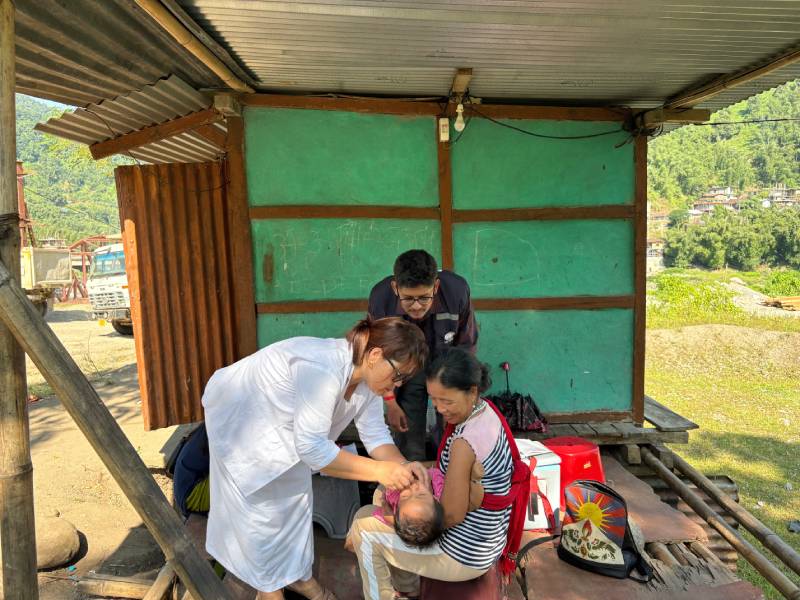The East Kameng district in Arunachal Pradesh has embarked on an ambitious initiative to strengthen routine immunization and protect every eligible child under District Hospital Seppa with support from World Health Organization (WHO) National Public Health Support Network.
The district health team has planned outreach sessions across 52 settlements and areas from August 2025 to March 2026, with a clear vision — to fast-track progress toward 95% immunization coverage, address the Measles-Rubella (MR) outbreak reported in 2024, and ensure that no child in the township remains left out or dropped out of the immunization schedule.
Among the focus areas is Pachan Morang Colony, identified as High-Risk Area (HRA) Code 6D. Under India’s Universal Immunization Programme, Code 6D identifies areas where outbreaks of vaccine-preventable diseases – such as measles, rubella or diphtheria – are actively occurring.
![]()
An auxiliary nurse midwife reviewing a child’s immunization card at the outreach session in Pachan Morang Colony in East Kameng district, Arunachal Pradesh (Photo credit: © WHO India / Ram Prasad Dorjee)
ASHAs (community health volunteers) from peripheral areas have stepped in to support the mobilization effort and played a crucial role in encouraging families to bring their children for vaccination. At the district level, the auxiliary nurse midwife and the medical superintendent of District Hospital Seppa worked closely with the community secretary to raise awareness and appeal to families about the importance of immunization.Information about the sessions was disseminated in advance through community influencers, ensuring strong turnout and participation. “Community partnership has been the key driver. The collaboration between health staff, ASHAs, and local leaders has helped us reach families that might otherwise be missed,” said Dr Kopi Gyadi, medical superintendent, District Hospital Seppa.

A mother getting her child vaccinated at the immunization outreach session in Pachan Morang Colony in East Kameng district, Arunachal Pradesh (Photo credit: © WHO India / Ram Prasad Dorjee)
To ensure learning and continuous improvement, the WHO-NPSN field team worked closely with district health officials identified gaps and operational challenges, which included incomplete U-WIN data entry for the digitization of immunization records, unavailability of paracetamol syrup for fever at a few session sites, and absence of colour-coded waste segregation bins in some places for biomedical waste management. District officials have initiated corrective actions to ensure these gaps are addressed when planning upcoming sessions.
The ongoing 52-sessions plan is more than a campaign — it represents a commitment to ensuring health for all, especially in remote and underserved areas. The initiative demonstrates how local leadership, technical guidance, and community trust can combine to overcome barriers and strengthen public health delivery.
As East Kameng moves forward with its weekly sessions, its example serves as a model for other districts striving to achieve universal immunization coverage.
